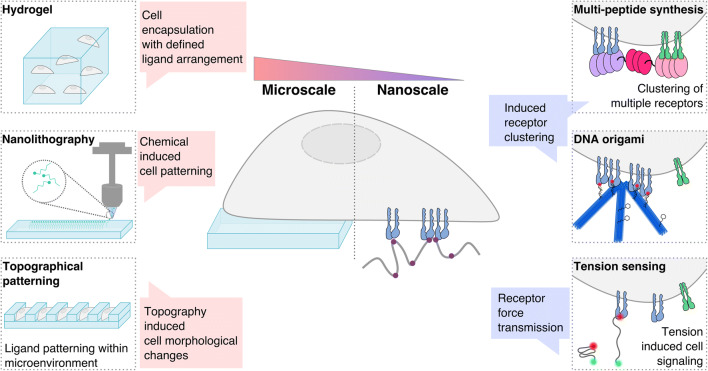Fig. 2.
Material techniques for studying cell–material interactions. Fabrication techniques range from the micro- to the nanoscale, thereby influencing cell fate across multiple length scales. Cells can be encapsulated in hydrogels at the macroscale, with ligands arranged for cell binding. Nanolithography enables precise patterning of ligands onto material surfaces for the study of cell receptor spacing and cell–material interactions. Topography can be introduced on material surfaces, alongside biochemical ligand patterning, thereby defining the microenvironment. Engineering multi-peptide complexes enables binding of several receptors, bringing them in close association. DNA origami provides a tool for precise ligand presentation and hence the study of receptor clustering. Tension sensors enable the study of the downstream signaling that is associated with force generation following receptor binding. All of these techniques enable the study of the nanoscale receptor spatial organization and the downstream effects on cell fate when interfaced with a biomaterial

